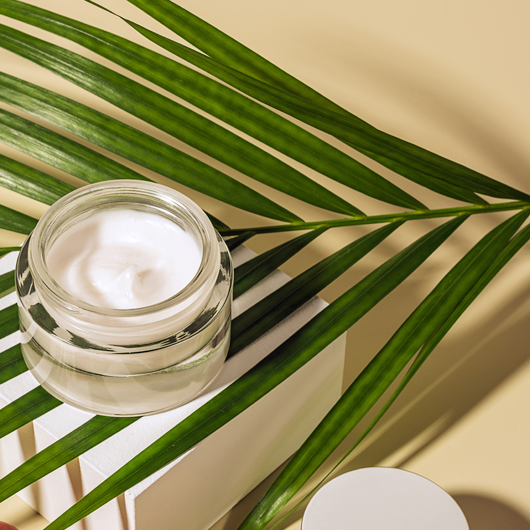Akiko Nicholls, who works for the Australian Certified Organic, reminds us to do our due diligence when purchasing a product. She states that there are many different organizations with various standards about how to label cosmetics. It would be best if you were an educated consumer.
The customer needs to make sure they know how to read a label and understand what you are buying.
This is because many brands are putting words like 'organic,' 'natural,' 'non-toxic' front and center of their packaging to lure consumers who are looking for a less toxic option for their skincare, haircare, or beauty needs.
The problem is that unless you know what ingredients to avoid, then it's easy to 'think' you are buying a safer product when you aren't.
There are two types of organic products:

- Beauty, haircare, and skincare products contain one or more organic ingredients used in conjunction with synthetic or artificially processed ingredients.
- Beauty, haircare, and skincare products that receive the certified organic certification. In this case, the product has gone through stringent government-sanctioned inspection by an accredited organic certification organization.
When it comes to accreditation, there are different standards between the various certifying bodies around the world. For example, if you want the highest certification, then you shouldn't choose EcoCert.
EcoCert is from France, and the certification standards are different. To be called certified, the product only needs to contain 10% organics and may contain synthetics.
Whereas on the other end of the scale, the highest level of organic certification standards is Australian Certified Organic, which guarantees a minimum of 95 percent of the ingredients are certified organic, and no artificial fragrances or petrochemicals are allowed.
If you don't see a logo from the USDA, Oregon Tilth, or other organization, the product, it is likely that it either:
- Does it not yield high enough content to qualify for certification.
- It may use one or more ingredients that are synthetic.
- The brand does have the right ingredients, but they have not gone through getting the certified label.
Savvy shoppers can also look for a more natural alternative to seeking products made with certified organic ingredients.' The benefit of this is that they can contain no less than 70 percent certified organic ingredients, and the remaining ingredients are derived from natural sources.
Again though, it ultimately comes down to knowing what you are reading on the INCI list to be aware of what you are putting on your body.
How do you, the consumer recognize what product is really 'Certified Organic'?
Let me demystify it for you. Here are the logos you should be looking out for and the countries they originate from:
Australian Certification:
NASAA Certified Organic - No less than 95% organic ingredients. The remaining 5% must be of agricultural origin.
ACO Certified Organic - Must be 95% organic ingredients. The remaining 5% must be naturally derived and non-toxic. Synthetics are not allowed.
OFC Organic - If you see the logo with the letters OFC visible on the front of a product, it has 95% certified organic ingredients.
American Certification:
USDA Certified Organic - No less than 95% to 98% organic ingredients (excluding water). They don't allow GMOs and have restrictions on the remaining 2% to 5% ingredients.
COPA - the State of California licensing program. COPA stands for the California Organic Products Act (COPA). This organization doesn't allow the sale of any cosmetic or skincare product to be labeled as "organic" unless that has a minimum of 70% organic content (excluding water).
European Certification:
BDIH Certified Organic - All ingredients need to be on the BDIH list of authentic and authorized ingredients. BDIH recommends that companies manufacture with organic content when the option arises.
The BDIH certification does not allow genetically modified ingredients (GMO), fragrances made with synthetics, artificial colors, ingredients derived from petroleum, preservatives from parabens, polymers, or any other harmful substance.
Eco-Cert Certified Organic - Must use 10% of the total product by weight (including water) organic ingredients. At least 95% of all ingredients should be from a natural origin.
No more than 5% of any synthetic content is allowed, with all non-natural ingredients belonging to the harmless synthetic ingredients list created by Eco-Cert.
Natrue Certified Organic - Natrue uses a star labeling system to indicate how organic the certification is. If a product has three stars, then the product has at least 95% organic ingredients farmed or wild-harvested.
Soil - Must include at least 95% organic ingredients to be labeled organic. Soil Association requires all of its certified products to show the organic percentage on the packaging. No GMO, synthetic fragrances, colors, petroleum derivatives, polymers, parabens, or other potentially harmful substances. Animal testing is not allowed.
Don't forget other environmental factors that you should be thinking about when buying your certified organic products, such as packaging, fair trade, and animal testing.
Always look for products that are also being environmentally conscious with their packaging, odds-on that if they are using regular ole' plastic (single use) packaging and lots of it, they may not be right for you.
Companies that use throwaway packaging aren't being environmentally responsible.
Try to find brands that offer a refill program so that you are reducing your waste as a consumer or, at the very least, buy a product that is in a container that you can re-purpose for something else after you have finished the product it contains.
Fair Trade is a simple concept: here, you buy certified products, whatever the brand. There, poor workers improve their income, respect the environment, and unite to work for their future. It aims at using trade to empower farmers and workers to fight poverty.
Another factor to consider is Animal Testing. Any brand that is genuinely trying to do the right thing will NOT test on animals. There are also logos that a brand can display to show that they don't test on animals, so you, as the consumer, are assured that it is true.
I hope you can use this article to help empower yourself when trying to navigate the world of products you want to use on your body.
About the AuthorArticle Contributed by Danielle Winters
Organic Natural Beauty Directory Founder
Thank you to Campaign for Safe Cosmetics.org for this information.








